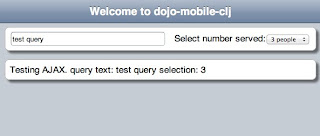More Clojure Datomic experiments: decoupling data building and transactions, and adding text search
I wrote two days ago and yesterday about my experiments for getting up to speed on Datomic. In the Datomic news group, Rich Hickey suggested that I keep any helper code for data-building separate from helper code for managing database access/transactions. I have reworked my code and added code to experiment with text search. Now that I have a few days of experimenting with Datomic I think I understand how I will structure an application for a side project: write a small helper library that is application independent, much as the code snippets in this article. Write another application specific helper library that layers on top of the application independent library that encapsulates all data store functionality that I will need, and unit test this separately. Then I can write the application layer that will probably not have any Datomic application specific code. After I finish the first version of my side project this morning then I will help my customer on his Datomic project. ...

